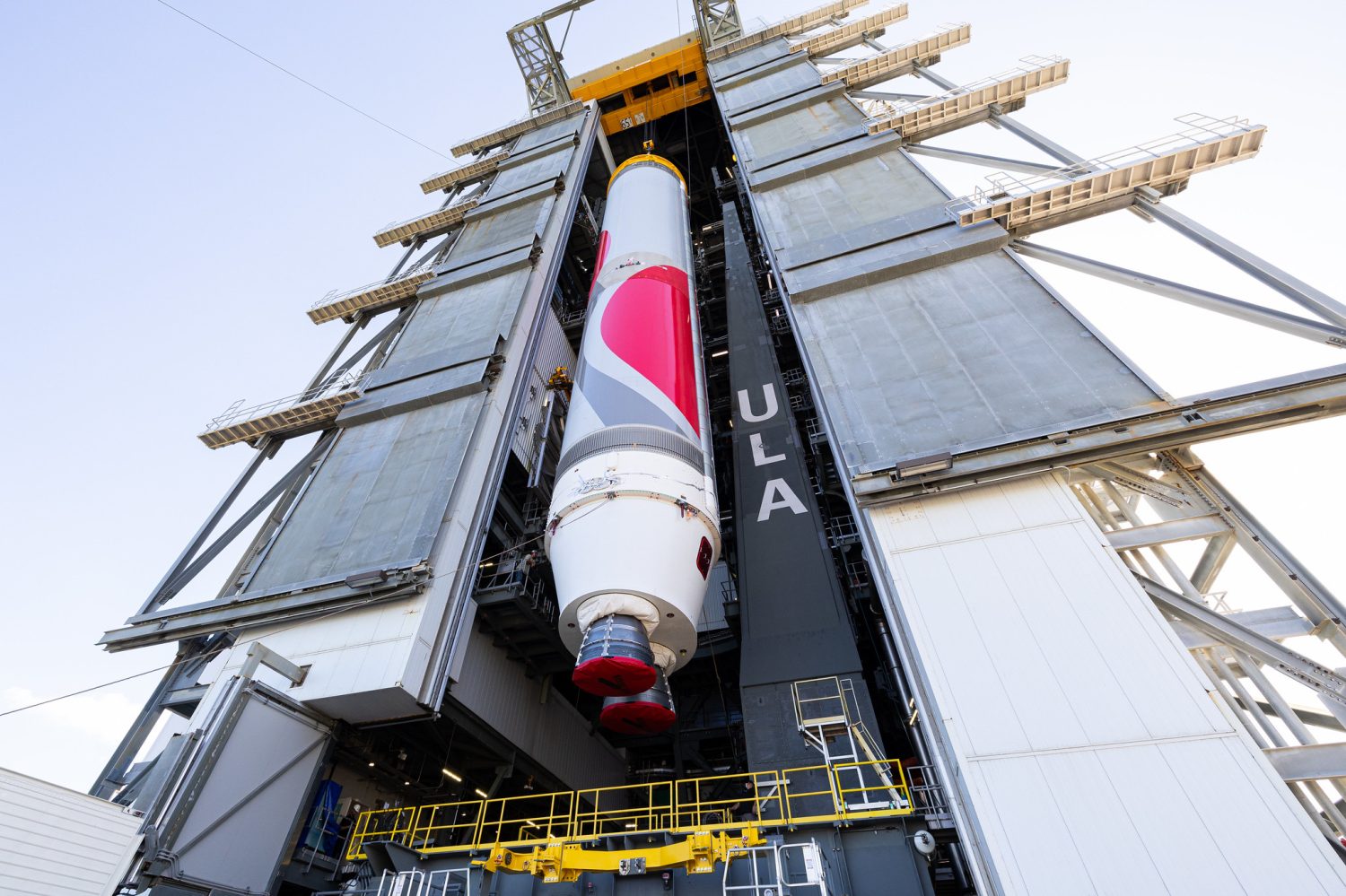
United Launch Alliance is targeting May 4 for the inaugural launch of its highly-anticipated Vulcan Centaur rocket.
The company has a planned window of four days to execute the launch once additional testing of the rocket and its main engines are satisfactory.
These final tests will occur at Space Launch Complex 41 at Cape Canaveral Space Force Station in Florida. According to CEO Tory Bruno, the mega rocket will roll to the launch pad “a few days from now” for a wet dress rehearsal, as well as additional tanking tests.
For the wet dress rehearsal, Vulcan will be loaded with methane and oxygen propellant as the company puts the rocket through a practice countdown culminating just before engine ignition.
ULA is also expected to perform a flight readiness firing test that will include igniting the two BE-4 engines to 70% of their thrust capacity for about 3.5 seconds. Once completed, the rocket will then return to the company’s integration facility to attach its payload ahead of launch.
During recent testing in Florida, Blue Origin and ULA tracked a higher performance than anticipated in the liquid oxygen pump in one of the BE-4 engines, which Bruno said is “potentially of greater concern.”
For the engine in question, it was determined the higher performance was due to “unit-to-unit variation,” Bruno said. Testing will continue with the other engine, he said, allowing further qualification tests ahead of the May 4 launch date.
When it’s finally ready, the Vulcan rocket with its Centaur upper stage is expected to launch two demo satellites for Amazon’s Project Kuiper — a broadband internet constellation — and Astrobotic’s Peregrine Moon lander.

Astrobotic’s lander is part of NASA’s Commercial Lunar Payload Services program and could become the first commercial spacecraft to soft land on the Moon. The Peregrine lander is targeting a region called Gruithuisen Domes, which is on the northeast edge of the Ocean of Storms.
According to the company, the lander is set to “carry a diverse suite of scientific instruments, technologies, mementos, and other payloads from six different countries, dozens of science teams, and hundreds of individuals.” This also includes payloads for NASA, as well as a space memorial company called Celestis, a company that sends cremated remains to space destinations of its customers’ choice.
According to ULA, Amazon, Celestis and Astrobotic are expected to deliver their payloads on time for a May launch.
FTC: We use income earning auto affiliate links. More.


Comments